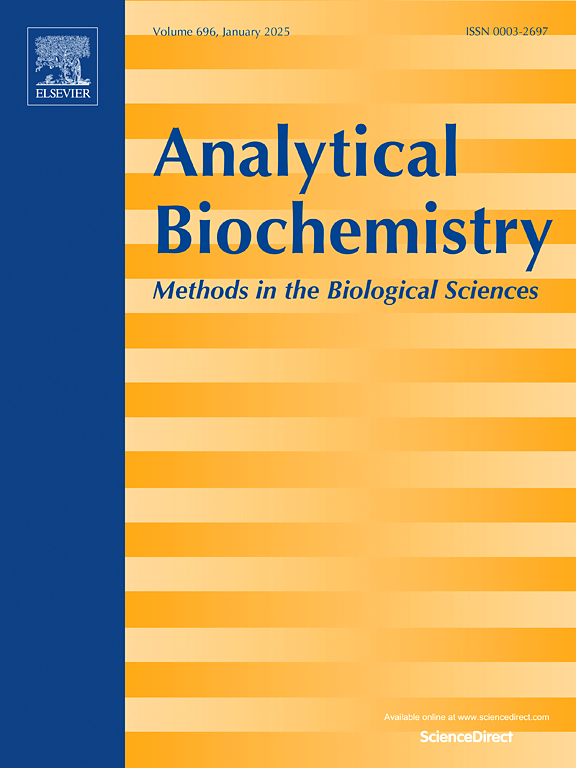用于检测肉毒杆菌神经毒素的生物传感器进展综述:解决食品安全和生物战风险。
IF 2.5
4区 生物学
Q2 BIOCHEMICAL RESEARCH METHODS
引用次数: 0
摘要
肉毒杆菌神经毒素(BoNTs)是由肉毒梭菌产生的致命毒素。摄入受BoNTs污染的食物会导致肉毒中毒,肉毒中毒会通过阻止神经递质的释放而影响个人的神经系统,导致弛缓性麻痹。本文就BoNTs的作用机制、致病性以及食品中各种新型的BoNTs分析检测技术作一综述。潜在的误用BoNT作为生物战剂也是一个主要问题。因此,对于致命bont的检测,各种传统技术,如小鼠致命性生物测定(MLB), SNAP-25测定,小鼠膈神经半膈(MPN)试验,非致命性小鼠弛缓性麻痹测定(NFPA)和现代技术(免疫测定,基于细胞的测定,基于核酸的方法,内多肽酶质谱测定)进行了讨论。本文还详细介绍了生物传感技术在食品中bont检测中的应用。此外,未来的研究重点应放在开发先进的新时代生物传感器上,用于食品中肉毒杆菌神经毒素毒性的自动检测和实时监测。生物传感器与量子技术和芯片实验室平台的集成是提高其通用性和鲁棒性检测的必要条件。在审查中提出的见解旨在提供未来的研究方向,并提高对未来潜在威胁的警惕。本文章由计算机程序翻译,如有差异,请以英文原文为准。

An overview of biosensor advancements for detecting botulinum neurotoxins: Addressing food safety and biowarfare risks
Botulinum neurotoxins (BoNTs) are lethal toxins produced by bacteria Clostridium botulinum. Ingestion of BoNTs contaminated foods causes botulism which affects individual's nervous system by blocking the release of neurotransmitters causing flaccid paralysis. This review article deciphers the comprehensive account on mechanism of action of BoNTs, pathogenicity, and various innovative analytical detection techniques of BoNTs in foods. Potential misuse of BoNT as a biowarfare agent is also a major concern. Hence, for the detection of deadly BoNTs various conventional techniques like mouse lethality bioassay (MLB), SNAP-25 assay, mouse phrenic nerve hemidiaphragm (MPN) test, non-lethal mouse flaccid paralysis assay (NFPA) and modern techniques (immunoassays, cell-based assay, nucleic acid-based methods, endopeptidase mass spectrometry assays) have been discussed. This article also provides a detailed account on biosensing technology for detecting BoNTs in foods. Moreover, future research efforts should be focused on the development of advanced new-age biosensors for automated detection and real time monitoring of botulinum neurotoxin toxicity in food. Integration of biosensors with quantum technology and lab-on-chip platforms is required for increasing their versatility and robust detection. The insights presented in the review aim towards providing future research directions and increase the vigilance against potential future threats.
求助全文
通过发布文献求助,成功后即可免费获取论文全文。
去求助
来源期刊

Analytical biochemistry
生物-分析化学
CiteScore
5.70
自引率
0.00%
发文量
283
审稿时长
44 days
期刊介绍:
The journal''s title Analytical Biochemistry: Methods in the Biological Sciences declares its broad scope: methods for the basic biological sciences that include biochemistry, molecular genetics, cell biology, proteomics, immunology, bioinformatics and wherever the frontiers of research take the field.
The emphasis is on methods from the strictly analytical to the more preparative that would include novel approaches to protein purification as well as improvements in cell and organ culture. The actual techniques are equally inclusive ranging from aptamers to zymology.
The journal has been particularly active in:
-Analytical techniques for biological molecules-
Aptamer selection and utilization-
Biosensors-
Chromatography-
Cloning, sequencing and mutagenesis-
Electrochemical methods-
Electrophoresis-
Enzyme characterization methods-
Immunological approaches-
Mass spectrometry of proteins and nucleic acids-
Metabolomics-
Nano level techniques-
Optical spectroscopy in all its forms.
The journal is reluctant to include most drug and strictly clinical studies as there are more suitable publication platforms for these types of papers.
 求助内容:
求助内容: 应助结果提醒方式:
应助结果提醒方式:


